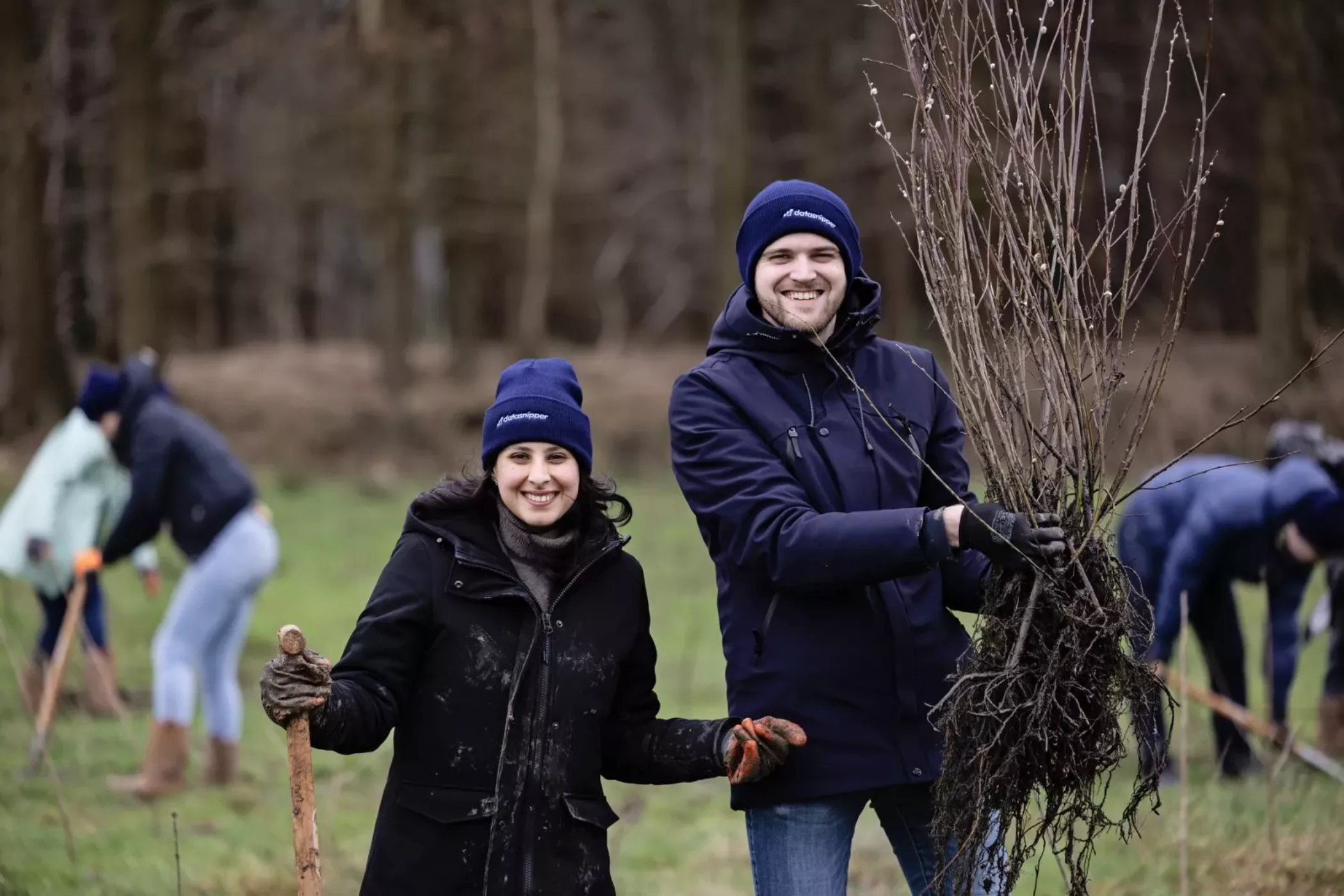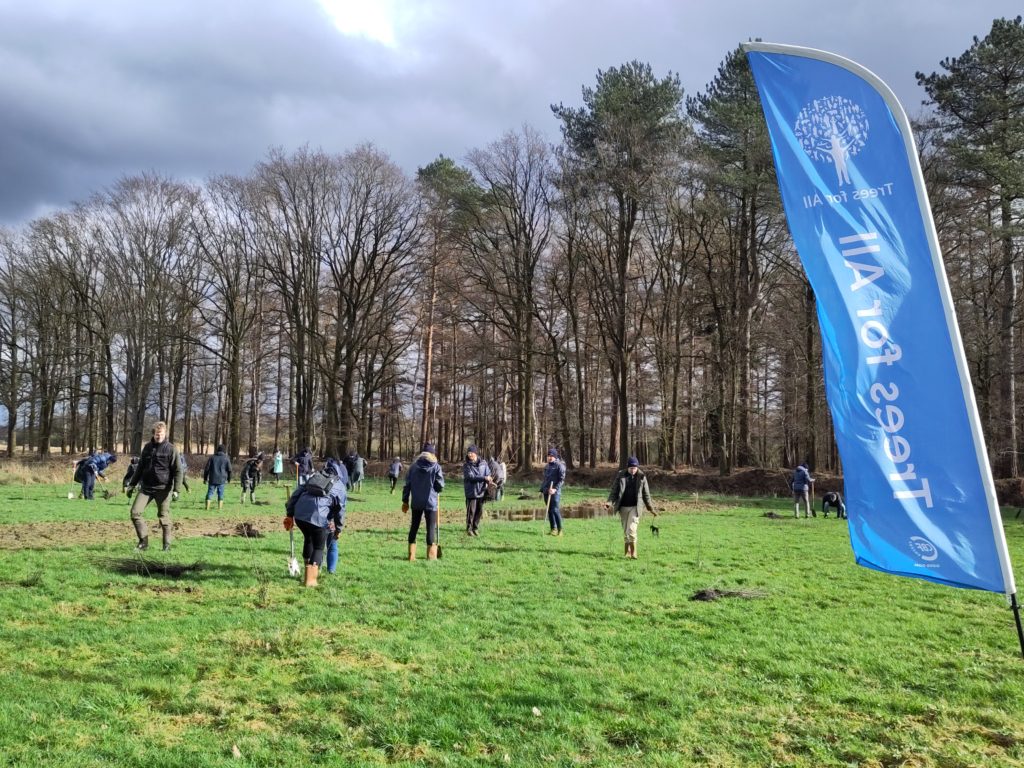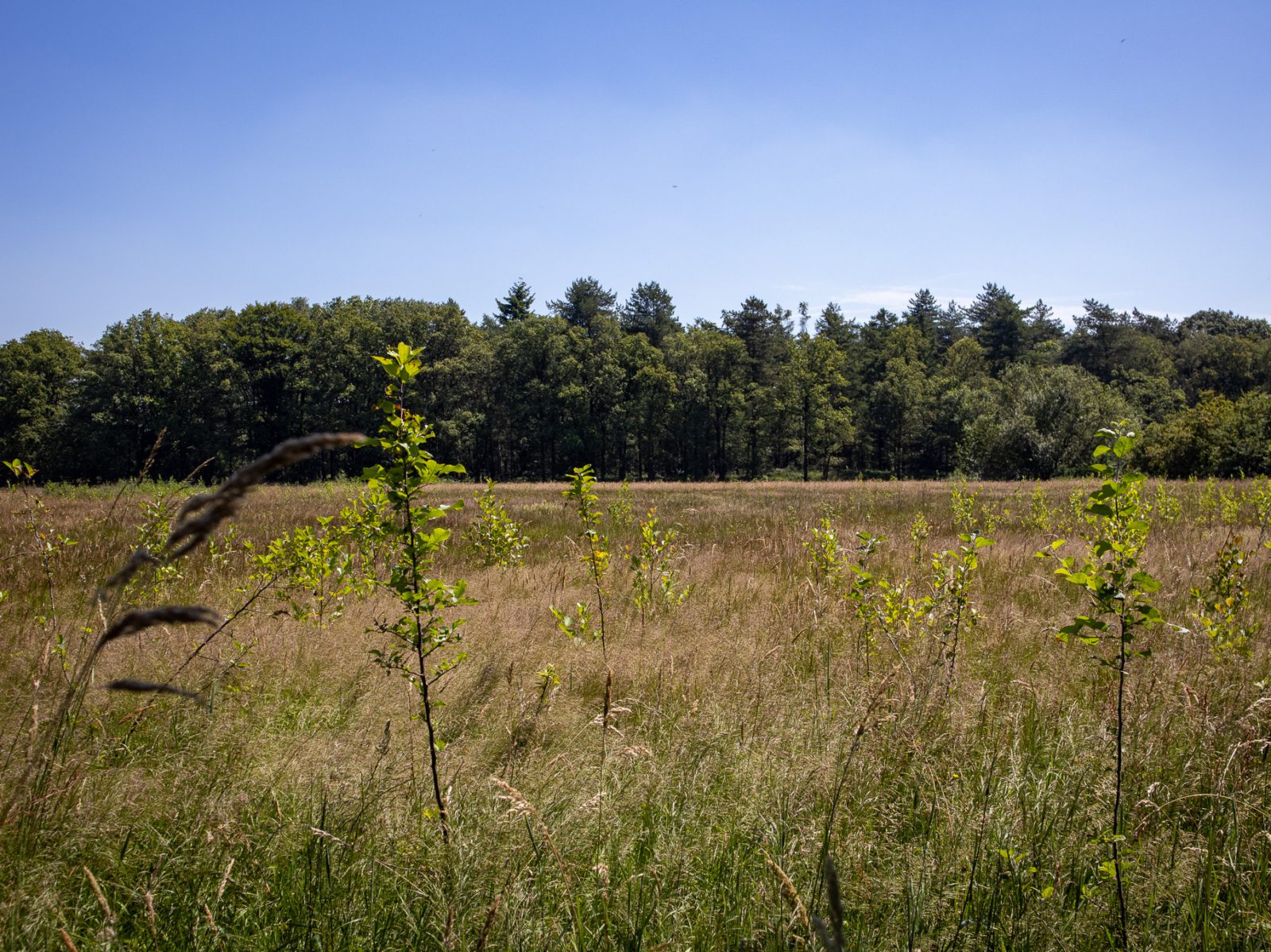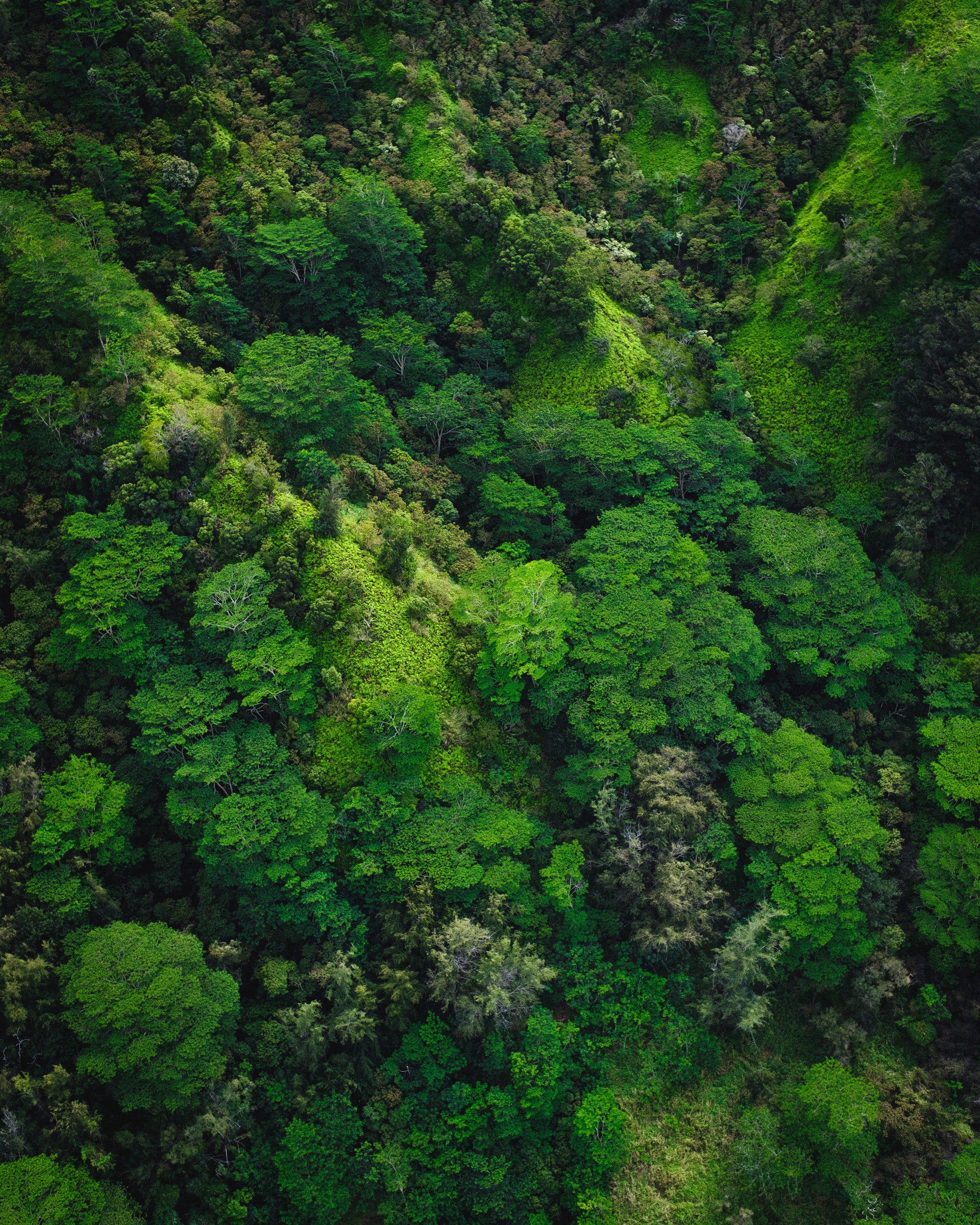Nearly 31 soccer fields of forest added in Brabant: results of 2023-2024
04 December 2024

04 December 2024
Last winter we planted 92,000 trees and shrubs throughout the province of Brabant. Together with Brabants Landschap, we plant new forest here, restore existing forest and provide more connection between existing nature areas. How are the trees doing now?
trees and shrubs
different species
hectares
planting season (Dec – March)
Together with our partner Stichting Brabants Landschap, we are planting more forests in North Brabant. We do this by planting trees on grasslands with various kinds of grasses and herbs, such as clover, buttercup and cuckoo flower. In principle, these grasslands may add surplus value to nature and biodiversity. But in the sites we have in mind to plant trees, this is not the case, unfortunately. For years, biodiversity has failed to start sufficiently of its own accord. Variety in nature is not optimal here, either.
By planting new forest on these locations, we bring biodiversity back on track. We provide a larger habitat and more food for all kinds of animals and plants. Moreover, the new forest connects surrounding nature reserves.
This is badly needed, because nature in Brabant is becoming increasingly fragmented. Small pieces of nature, with special plants and animals, are becoming isolated from each other. The plants and animals find it more difficult or even impossible to move from one area to another. Thanks to the new forest, animals such as the pine marten, roe deer, goshawk and black woodpecker will soon have a home again.
And those grasslands which are herbaceous or show the potency to become so? We simply let them be. They form a beautiful addition to the forests of the Netherlands!
Since 2021, we and Brabant Landscape have already planted more than 200,000 trees and shrubs in North Brabant. Last winter, another 92,000 trees were added, including 26,042 trees thanks to DataSnipper’s contribution.
In total, 20.7 hectares of new forest were planted across 31 different locations. That’s nearly 31 soccer fields of new forest!
Planting day at De PannenHoef
One of the planting locations is at the Pannenhoef nature reserve. Here, the new forest was made possible in part by our corporate forest partner DataSnipper. During a tree planting day in February 2024, colleagues from DataSnipper rolled up their sleeves. They put hundreds of trees in the ground, including two species of willow, Gelderland rose and alder. It was hard work, because the area was extremely swampy due to the extremely wet winter. But that didn’t spoil the fun! Then Brabants Landschap finished the planting work.
This new forest forms an ecological connection between the Pannenhoef nature reserve and De Moeren estate, the Oude Buisse Heide and the Kievitsmoeren. With the planting we provide a gradual transition from high forest to low grassland. Thus animals such as foxes, different species of birds and weasels and ermines will soon feel at home. This connection is part of the Nature Network Brabant, a network that connects and enlarges existing nature areas in Brabant.

Planting location at De Pannenhoef in February 2024

In May 2024 the trees were already in full leaf
It also rained an awful lot during the rest of the planting season and in the spring of 2024. Some planting sites in Brabant were even completely flooded. Heavy machines that help with soil preparation could therefore not drive onto the land. Also, the roots of the trees cannot stand under water for long. That is why Brabant Landscape chose not to plant the plots that were really too wet until next planting season.
Of the trees planted in the Pannenhoef, a small portion suffered from flooding and got some brown leaves. Fortunately, the little trees recovered. After the summer, they looked a lot better! Also planted were plenty of tree species that are used to wet feet and can take a beating, such as willows.
Despite the extremely wet period, the trees at the various locations in North Brabant are growing well and there is very little downtime. Brabants Landschap will keep a close eye on how all that water affects the trees in the coming period.
Despite an extremely wet winter and wet spring, trees are growing extremely well at the various planting sites in North Brabant
When planting new forests, it’s normal that not all the trees survive. So we make agreements with our project partners beforehand about the percentage of loss we allow within a project. Usually, this percentage is between 5 and 15%. If the loss is higher, due to unforeseen circumstances, then new trees are planted in the following planting season. This is also known as refill. So together, we make sure the forest gets off to a good start!
In the new Brabant forests, we planted a variety of native trees and shrubs. These include rowan, field maple, hornbeam, sweet cherry, hazel, hawthorn, gale, dog rose, pedunculate oak, sessile lime, elder, downy birch, holly, bird cherry, common rose, privet, wild apple, black alder and willow.
This is how we create strong and diverse forests. Such varied forests are a lot more climate proof than forests consisting of only a single species of trees. Does one kind of tree meet with rough times? The other species will keep the forest in shape.
These different tree and shrub species also attract plants and animals that find their habitat and food here. So thanks to the new forest, biodiversity gets a big boost! The first results are already noticeable: at one of the planting locations Brabants Landschap has already spotted two hunting buzzards.
The grasslands are deliberately not completely planted with new trees and shrubs. Brabants Landschap chooses to leave some plots open, leaving room for natural development processes. For example, trees that spread their seeds, such as birch and willow, can grow spontaneously here in the future.
This will create a natural and varied forest with trees and shrubs of different sizes, ages and structures. In short, a forest for the future!

Without the support of our donors, this project would not have been possible. Together, we have made the world a little greener again. See you next planting season!